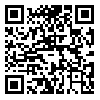Volume 5, Issue 7 (2020)
JCSFA 2020, 5(7): 9-38 |
Back to browse issues page
Download citation:
BibTeX | RIS | EndNote | Medlars | ProCite | Reference Manager | RefWorks
Send citation to:



BibTeX | RIS | EndNote | Medlars | ProCite | Reference Manager | RefWorks
Send citation to:
Ahmad B, Golpour L, Nazari A. The analysis of written errors of Arabic Persian learners on the basis of four morpheme models. JCSFA 2020; 5 (7) :9-38
URL: http://jcsfa.modares.ac.ir/article-39-57982-en.html
URL: http://jcsfa.modares.ac.ir/article-39-57982-en.html
1- , golpour@plc.ikiu.ac.ir
Abstract: (1812 Views)
Abstract
In the process of learning and teaching the second language, errors are the inevitable part. According to the importance of this topic, this study attempts to investigate the errors of Arabic native speakers learning Persian based on the four morpheme model. Morphemes are classified into two groups of early systematic morphemes and late systematic morphemes in the frame of four morpheme model. The data have been collected of 50 Arabic native speakers learning Persian in Imam Khomeini international university. it was found that Arabic native speakers learning Persian have more errors in utilization of late systematic morphemes (for instance the sign of” را than early systematic morphemes and they will learn it later. Their writing errors have been investigated on the basis of three inter lingual, interalingual, and ambiguous sources. After the analysis based on the origin, it has been determined that most of the errors of Arabic native speakers learning Persian are interalingual. By comparing the data of this study with previous studies, it was found that the arrangement pattern of learning morpheme is like mediator additional sign “ی”, the sign of “را”, extra letters, verb, plural morpheme.
Keywords: Writing error, four morpheme model, Content morpheme, early systematic morpheme, late bridge systematic morpheme, late outside systematic morpheme
Article Type: Original Research |
Received: 2020/05/30 | Accepted: 2020/10/1 | Published: 2020/11/20
Received: 2020/05/30 | Accepted: 2020/10/1 | Published: 2020/11/20
Send email to the article author
| Rights and permissions | |
 |
This work is licensed under a Creative Commons Attribution-NonCommercial 4.0 International License. |







